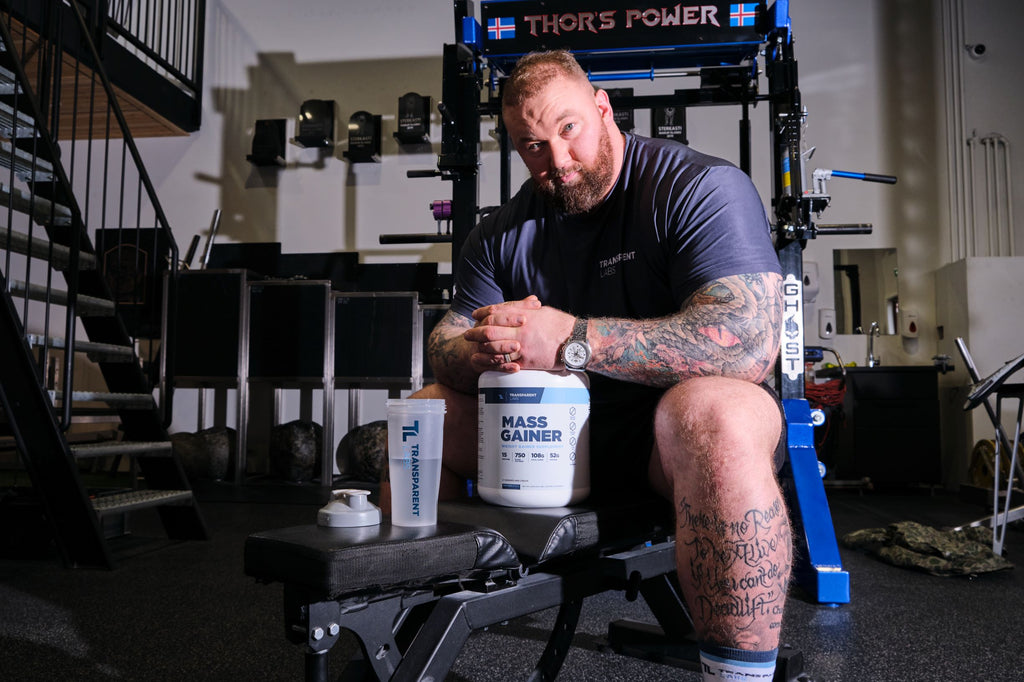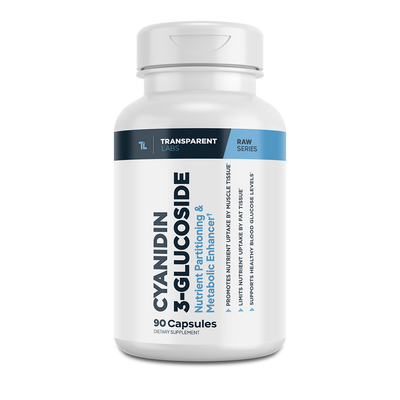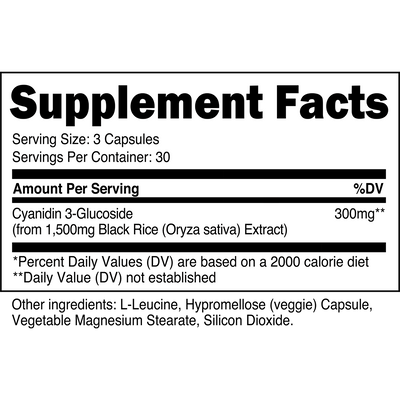Ectomorph Body Type | How to go from skinny to muscular

You’ve been spending regular time training in the vicinity of your gym’s powerlifters for weeks now. You’re aggressively trying to gain muscle mass, but as far as you can tell, you haven’t added an ounce.
The fact that your best efforts have resulted in zero muscle growth has you feeling quite frustrated, and your most recent conversation with the grizzled personal training director in your gym hasn’t helped matters.
“You’re an ectomorph, kid,” the trainer chuckled confidently. “That’s just your natural body structure. You can’t really build muscle. If you want my advice, you should stick to what you’re best at. Embrace your low body weight. Become a runner. Leave the weightlifting to the big guys.”
You’d love to simply dismiss this conversation and get back to lifting, but it sticks with you. What if he’s right? Are you saddled with a body type that will make it eternally difficult for you to gain size? Is it a foregone conclusion that your body type won’t let you build muscle mass, and you should just take a sad walk back to the cardio room?
And speaking of body type, that’s nothing that was ever covered during your high school physical education classes. If you truly are an ectomorph — whatever that is — how do you arrange a diet and exercise plan that can help you gain size in spite of your body structure?
What are the body types?
When people in the fitness realm reference the three body types, they’re usually referring to a set of terms used to place people into one of three categories: ectomorph, mesomorph and endomorph.
These three body types have been generally accepted by fitness experts as a simple way of classifying people in order to understand the advantages and challenges they might have with respect to weight gain and weight loss. They are also often applied to performance advantages and disadvantages based on natural physical frames.
Endomorph Body Type
If you’re an endomorph, you’re characterized by the ability to quickly gain and retain size, whether it’s fat mass or muscle mass. This can be viewed as a negative trait, particularly when it comes to the retention of body fat and the overall quality of body composition.
People with the endomorph body type predominate in power sports, or at power-oriented positions within specific sports, like football. General features of an endomorph will include a medium frame with wide hips, broad shoulders, thick arms and legs, and the ability to rapidly pack on size across all of these areas.
While the gains in size come quickly, endomorphs also tend to accumulate more fat than other body types. This also means that when it’s time to lose weight, fat loss tends to come slowly for endomorphs unless they make major changes to their nutrition and training routines.
Mesomorph Body Type
It is often said that the mesomorphic body type is the envy of people who inhabit either of the other two body types, and this is because mesomorphs possess traits that ectomorphs and endomorphs both desire. Specifically, a true mesomorph will have a much easier time gaining size than an ectomorph, and also a far simpler ability to lose body fat than an endomorph.
In sports, mesomorphs usually excel at positions that reward speed, power, and endurance. They have narrower hips than endomorphs, but often retain the broad shoulders, and the ability to grow thick muscles with relative ease.
In essence, when it comes to building muscle mass while shedding unwanted fatty tissue, mesomorph body types have nothing to worry about.
In addition, when they turn their attention to fitness, people with mesomorphic bodies frequently end up with the most aesthetically balanced physiques because they combine the wide shoulders and hips of an endomorph with the narrow waist of an ectomorph.
Ectomorph Body Type
If you fall into the category of ectomorph, it’s easy to evaluate yourself through a negative lens. This is most common if your goal is to gain size, because you may discern that your body type is a permanent curse preventing you from fulfilling much of your athletic potential.
This negative mental approach can stem from narrow hips, a narrow waist, narrow shoulders, relatively thin arms and legs, and a generally skinny frame. When you’re engaging in a physical pursuit that rewards a genetic predisposition toward a large frame and rapid size gains, these traits can work against you.
On the flip side, if you simply examined your plight from a balanced perspective, you would see that there are advantages to having a physique that tends toward skinny. Most endurance athletes are skinny, and it can clearly be advantageous in several sports to be tall, thin, and agile, with long limbs.
On top of that, if you intend to bulk up an ectomorph body, the gains may come slowly, but you are also more likely to make gains precisely where you want them, without becoming overwhelmed by unwelcome size gains in the wrong areas.

Where did the body types come from?
Ironically, the lumping of human beings into three body type categories is a product of the research of psychologist William Herbert Sheldon. Also a eugenicist, the New England doctor proposed a classification system for the human physique based on body types primarily so that he could also extrapolate and attribute psychological traits and behavioral tendencies to each group.
For example, Sheldon believed endomorphs were friendly, laid back, and lazy. He further posited that mesomorphs were competitive and extroverted, while ectomorphs possessed the greatest intellectual potential of the three groups, but were introverted and anxious.
Over time, these psychological presumptions fell by the wayside, but the physical groupings lingered in the fitness realm.
Sports medicine has progressed to the point where few people view Sheldon’s classifications as fundamental truths about physical characteristics. However, the three groups still have enough basis in observable reality that the fitness industry has found them useful for tailoring nutrition and exercise plans to people with these basic body types.

How to train if you have an Ectomorph body type
If you’re still reading at this point, you’re probably convinced that you fall into the category of having an ectomorph body type. Congratulations! Acceptance is the first step to change.
So now we need to get a handle on exactly what you should be doing in the gym to offset having a lean build that makes it difficult to gain weight, and particularly when it comes to building muscle.
Resistance Training for the Ectomorph Body
If the characteristics of an ectomorph best match your body type, then muscle growth is most likely to be stimulated by heavy lifting. This means your exercise routine will have to include intense training, particularly with exercises designed to increase strength.
The first step to building muscle is breaking your existing tissue down through physical activities that challenge it. Fatigued and strategically damaged tissue gets repaired while you rest, enabling you to come back and subject it to another round of training, prompting the cycle to begin once again.
In this case, you are advised to implement elements from the following resistance training strategy, if not the entire strategy:
-
Try to train your entire musculature at least once over the course of a week, prompting steady size increases across your entire physique.
-
Train with heavy weights in sets of eight to 10 reps to induce the most rapid physiological response
-
Focus primarily on compound exercises that strategically break down all of your largest muscle groups, while also inviting participation from smaller muscle groups. These include exercises like squats, deadlifts, bench presses, overhead presses, and pullups.
-
Follow your compound exercises with supplemental movements that isolate and comprehensively fatigue each of your muscle groups with precision.
Cardio for the Ectomorph Body
It is understandable why you’d want to include regular cardio in the planning of your physical activities. Even aside from the burnoff of unnecessary calories that accompanies cardio training, frequently elevating your heart rate is also linked to improved heart health, and a reduction in the incidence of several diseases, including heart disease. (1)
Unfortunately, none of that is beneficial to you if you have an ectomorph body type and prioritize increasing your size. Studies show that while it is possible to gain muscle mass through resistance training without modifying your diet plan, the foremost muscle gains are achieved by test subjects who consume more calories. (2)
For the record, those who had the higher energy surplus also acquired more body fat as well.
In your case, this means that you need to be very careful when it comes to overdoing the cardio; if you burn off too many calories, your energy surplus will disappear, and you won’t be able to gain as much body mass.
How to Eat if You Have an Ectomorph Body Type
The saying that abs are made in the kitchen applies somewhat less to ectomorphs, since maintaining a lean and ripped body shape is unlikely to be a challenge. The strategy of ectomorphs should be directed toward establishing a nutrition plan to support physical growth.
Simply put, since ectomorphs tend to lose weight easily, their nutrition schedule has to be specially tailored to bulk them up!
Food for the Ectomorph Body
As previously mentioned, creating an energy surplus helps to support weight gain. This means ectomorphs need to flat out eat if they want to boost body mass. This isn’t to suggest that you should just pound down the junk food if you’re an ectomorph and expect to remain consequence free. Studies show that this would eventually have negative consequences on your overall body composition, along with elevating symptoms of fatigue, nervousness and depression. (3)
Instead, ectomorphs should carefully boost calorie intake through a healthy eating plan. A balanced diet includes lean protein, nutrient dense carbohydrates, and healthy fats. In this case, the ideal carbs include foods like brown rice, sweet potatoes, and whole grains, which have valuable nutrient content to lend additional value behind the calorie gain.
Protein intake is going to be crucial for multiple reasons if you desire to gain weight as an ectomorph. While the calories from protein certainly won’t hinder your quest to grow, it’s the contribution of protein to muscle growth and repair that is most vital to the process.
When you break down muscle tissue through strength training, protein accelerates and optimizes the repair process, helping to rebuild the muscles in a larger, stronger state. In the absence of protein, these processes aren’t nearly as efficient, and studies have concluded that low protein intake is directly associated with lower body mass, all other things being equal.(4)
Supplements for the Ectomorph Body
Because protein and increased calories are your foremost priorities if you wish to retain a healthy body composition while you grow your muscles, there are a few types of supplements you should consider.
A protein supplement is a safe bet for you, as it can ensure that you’re experiencing the quality of muscle repair needed to effectively inflate your muscle size. Along those lines, you may also wish to try a mass gainer, which buttresses that protein supply with a massive dose of clean calories.
Finally, supplementing with creatine can enhance the ability of your muscles to face increased resistance, and to recover from those efforts more quickly. In short, you’ll be able to lift more heavily, and more frequently. This will lead to more rapid gains in muscle size.

Common Mistakes Ectomorphs Make
The path to helping people who have difficulty gaining weight to compensate for low muscle mass is fairly straightforward, but the plan often goes awry in its execution.
Yes, the human body doesn’t always respond to stimuli the way we’d like it to, nor as quickly as we’d like it to, but you must ensure that you’re walking through the procedures as directed. If you don’t, you may find yourself frustrated, and walking completely away from the plan instead.
Leaning into What They’re Best At
People have a tendency to gravitate toward activities that they find the most success with. In the case of ectomorphs and their exercise habits, there is a tendency to prioritize physical activity that will showcase endurance, instead of activities that necessitate extremely heavy lifting.
The problem is that high-rep weightlifting is less likely to result in muscle growth than low-rep, heavyweight sets. Then there’s the fact that long bouts of cardio burn off the calories required to sustain muscle growth. To eventually succeed at getting bigger, ectomorphs must tolerate endeavors where they may not be naturally inclined for success.
Not Lifting Heavy Enough
Even if fitness aspirants with endomorph body types hit the weights with regularity, they may not instinctively lift heavily enough to gain the right type of size. Keeping the rep count low and the resistance level high is the right mix of physical activity to effectively add size.
Not Eating Enough Protein
Even if ectomorphs experience a breakthrough and add size, they may end up with a higher body fat percentage than they envisioned. This can result from eating too many of the wrong foods, and ending up with excess mass of an unwelcome sort. In these cases, the best diet will prioritize protein consumption to inspire the growth of more muscle mass, and less fatty tissue.
Not Trusting the Process
Even if you have the right approach to diet and exercise, it can still take quite some time to see meaningful results if you have an ectomorph body type. It is a common complaint of people who pursue their fitness goals that positive signs of change don’t materialize quickly enough.
For ectomorphs, there may be an increased likelihood that they will jettison the whole process if their physical fitness doesn’t improve in the precise way they were hoping it would. The only way to ultimately become successful is to stay the course, stick with the plan, and continue the hard work until a breakthrough occurs.

Outwork Your Genetics
If you’re the owner of a classic ectomorphic body, and you have difficulty adding size to your frame, there’s no need to fret. If you add to your daily routine as many habits that support muscle growth as you possibly can — like engaging in consistent weight training and implementing a healthy eating plan — you’ll eventually find yourself inhabiting a physique that any ordinary person would envy.
References:
-
Lee DC, Pate RR, Lavie CJ, Sui X, Church TS, Blair SN. Leisure-time running reduces all-cause and cardiovascular mortality risk. J Am Coll Cardiol. 2014 Aug 5;64(5):472-81. doi: 10.1016/j.jacc.2014.04.058. Erratum in: J Am Coll Cardiol. 2014 Oct 7;64(14):1537. PMID: 25082581; PMCID: PMC4131752.
-
Ribeiro AS, Nunes JP, Schoenfeld BJ, Aguiar AF, Cyrino ES. Effects of Different Dietary Energy Intake Following Resistance Training on Muscle Mass and Body Fat in Bodybuilders: A Pilot Study. J Hum Kinet. 2019 Nov 30;70:125-134. doi: 10.2478/hukin-2019-0038. PMID: 31915482; PMCID: PMC6942464.
-
Mititelu M, Oancea CN, Neacșu SM, Musuc AM, Gheonea TC, Stanciu TI, Rogoveanu I, Hashemi F, Stanciu G, Ioniță-Mîndrican CB, Belu I, Măru N, Olteanu G, Cîrțu AT, Stoicescu I, Lupu CE. Evaluation of Junk Food Consumption and the Risk Related to Consumer Health among the Romanian Population. Nutrients. 2023 Aug 16;15(16):3591. doi: 10.3390/nu15163591. PMID: 37630781; PMCID: PMC10459196.
-
Huh Y, Son KY. Association between total protein intake and low muscle mass in Korean adults. BMC Geriatr. 2022 Apr 11;22(1):319. doi: 10.1186/s12877-022-03019-1. PMID: 35410179; PMCID: PMC8996477.








